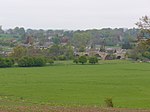Cilurnum
Archaeological museums in EnglandEnglish Heritage sites in NorthumberlandForts of Hadrian's WallMuseums in NorthumberlandMuseums of ancient Rome in the United Kingdom ... and 3 more
Roman fortifications in EnglandRoman sites in NorthumberlandUse British English from February 2023

Cilurnum or Cilurvum was an ancient Roman fort on Hadrian's Wall at Chesters near the village of Walwick, Northumberland. It is also known as Walwick Chesters to distinguish it from Great Chesters fort and Halton Chesters. Cilurnum is included in the Notitia Dignitatum of the late 4th/early 5th century. Cilurnum is considered to be the best preserved and best example of a Roman cavalry fort along Hadrian's Wall. The site is now preserved by English Heritage as Chesters Roman Fort. There is a museum on the site housing finds from the fort and elsewhere along the wall.
Excerpt from the Wikipedia article Cilurnum (License: CC BY-SA 3.0, Authors, Images).Cilurnum
Military Road,
Geographical coordinates (GPS) Address Nearby Places Show on map
Geographical coordinates (GPS)
| Latitude | Longitude |
|---|---|
| N 55.026 ° | E -2.139 ° |
Address
Chesters Roman Fort
Military Road
NE46 4BQ , Humshaugh
England, United Kingdom
Open on Google Maps








